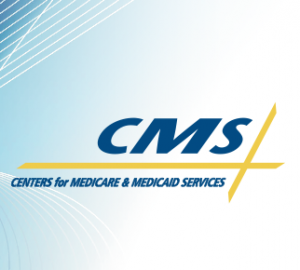© 2013 Paul Hirsch
A brief note to the Readers: First, I would like to thank all of the people who have taken time to comment on this article series, and those who have taken time to email me expressing interest in this subject. I know it has been longer than I ever anticipated, but FINALLY I am posting the next part of this “series.” I appreciate everyone’s patience, we are a small office (3 people), and when we had 4 different cases in various phases of litigation simultaneous blog posting and website updates took a far backseat!
 Part 2: Health Care Laws – Anti-kickback: Employees
Part 2: Health Care Laws – Anti-kickback: Employees
We (here at the firm) have almost always approached the issue of paying marketers form the standpoint of: “in most situations the best approach will be to treat them as an employee, rather than as an independent contractor.” Our original article articulated this in a very basic manner.
So why is this the best approach?
Please note that the term “best” is subjective, this might not be the best approach in certain instances, but we believe that more often than not it will be the simplest approach and minimize an employer’s exposure to liability.
Understanding the “why” necessarily requires looking into the history behind the federal Anti-kickback laws, the impact they had on the healthcare industry, and how the law (and accompanying regulations) adapted through the years.

- The Back Story: Some readers might wonder why this is even a discussion. For those readers, and for those who have not thought about the Anti-kickback laws in some time, here is a greatly condensed explanation:
ALL healthcare providers who participate in the Medicare, Medicaid, or any other healthcare program that is funded by federal dollars are subject to the federal anti-kickback laws. In 1972 Congress responded to abusive practices by healthcare providers participating in the federal healthcare programs by enacting a law which is commonly known as the anti-kickback statute. Initially, this law simply prohibited soliciting or offering a “kick-back, bribe, or rebate.” Each violation of this law was punished as a misdemeanor, a relatively minor offense.
In 1977 Congress elevated the possible punishment for violations of the statute to a felony, and they expanded the scope of what actions were prohibited. Congress realized that the implications of continuing abusive practices of the publicly funded healthcare programs must be stopped in order to ensure effective delivery of healthcare to a growing population of participants. They expanded the reach of this statute by making its punishments apply to “any remuneration.”
In 1977 the statute essentially said the following:
ANYONE who:
◊ offers to pay, pays, receives, or asks for;
◊ ANY remuneration (including any kick-back, bribe or rebate)
◊ directly or indirectly; overtly or covertly; in cash or in any other form;
◊ in return / exchange for furnishing, purchasing, leasing, arranging for, or referral related to;
◊ ANY healthcare item or service which might be paid for partially or fully by the federal government
♦ … can be found guilty of a felony punishable by a fine of $25,000, 5 years in prison, or both for each violation.

At this point, the anti-kickback statute substantially became what it is still today, and because it is SO broadly worded, it applies to an overwhelming variety of healthcare related transactions. Congress realized this when they implemented it in 1977. Congress sought to ensure that otherwise legitimate transactions would receive an ‘exception’ by stating that this statue would not apply to a few specific transactions.
Even though this 1977 revision included specific protections for “any amount paid by an employer to an employee (who has a bona fide employment relationship with such employer) for employment in the provision of covered items or services.” This and a few other exceptions were included in the text of the statute to help ensure that the statue was only applicable against the abusive practices it was aimed at stopping.
Only 3 years passed before Congress recognized that their revised language was so broad that it was causing a large amount of uncertainty in the healthcare industry. Healthcare providers were unsure of what transactions or relationships were a violation of the statue. Congress responded by revising the statute in 1980, inserting a “mens rea” requirement (a requirement present in most criminal statutes which means only people who have the specified level of intent may be found guilty of violating the statue). The law now requires that violations be “knowing and willful” in order to be punishable.
Congress took the time to specify that it was “concerned that criminal penalties may be imposed under current law to an individual whose conduct, while improper, was inadvertent.” Also, the 1980 changes are “to assure that only persons who knowingly and willfully engage in the proscribed conduct are to be subject to criminal sanctions.”
 As is often the case, Congress’s best intention-ed actions did not provide the desired results (we all know what road was paved by best intentions).
As is often the case, Congress’s best intention-ed actions did not provide the desired results (we all know what road was paved by best intentions).
By 1987 the complaints of over breadth of the wording in the statute and rising concerns about fraud and abuse in the federal healthcare industry rose to the point that Congress had to act. Congress’ response was to issue a comprehensive set of amendments to the federal healthcare system and the anti-kickback statute.
These amendments added that violators of the anti-kickback statute could also be subject to exclusion from participation in the healthcare programs if they were convicted of a criminal offense in connection with healthcare items or services. Simultaneously, Congress allowed the Department of Health and Human Services (HHS) to issue guidance and rules concerning healthcare transactions and relationships. This delegation of power is a notable point in the HHS’s history, because Congress instructed the HHS to issue “safe harbors” for certain transactions, financial relationships, and interactions. HHS was empowered to “promulgate regulations specifying payment practices that will not be subject to criminal prosecution” or otherwise be the “basis for exclusion from participation” in the federal healthcare programs.
The OIG chose to issue their guidance on the anti-kickback safe harbors through its OIG department. The OIG issued its first “Final Rule” listing certain safe harbors in 1991. Since then, these “safe harbors” have become some of the most essential guidelines for healthcare providers whenever financial transactions are concerned. Since their inception and presently these safe harbors can be found at § 1001.952 in the Code of Federal Regulations (C.F.R.).
Big or small, non-profit or for profit, privately owned or publicly traded, ALL healthcare providers who participate in Medicare, Medicaid, or any other federal healthcare program MUST abide by the safe harbors in order to successfully ensure compliance with the applicable laws and regulations.
Many states have implemented their own anti-kickback laws and almost all of them have modeled their state laws off of the federal statute. Some states not only model their prohibitions after the federal law, they even adopt the federal simply by mere reference to them.
The previous description and brief history of the anti-kickback statute provides a solid frame of reference to begin looking in detail at these safe harbors, including the “Employee” safe harbor, which is in essential parts as follows:
C.F.R. § 1001.952 (“Exceptions”): “The following payment practices shall not be treated as a criminal offense … and shall not serve as the basis for an exclusion…
C.F.R. § 1001.952(i) (Employees): Prohibited “remuneration” does not include any amount paid by an employer to an employee, who has a bona fide employment relationship with the employer, for employment in the furnishing of any item or service for which payment may be made in whole or in part under Medicare, Medicaid or other Federal health care programs. For purposes of… this section, the term employee [shall be defined by the IRS’ definition].
- Employee vs. Independent Contractor ( a Marketer as an Employee – examined)
Now, we can finally gain some ‘traction’ understanding why marketers should be paid as employees rather than as independent contractors, beginning with an analysis of the employee safe harbor.
At the outset, the safe harbor clearly protects payments from an employer to an employee… then it goes on to specify “for employment in the furnishing of any item or service for which payment may be made in whole or in part under Medicare, Medicaid or other Federal health care programs.” …
“for employment in the furnishing of”: This language is simply unclear. What is employment “in the furnishing of…”?
- INTERPRETATION A: What is the simple answer? What is most obvious?
Couldn’t this phrase “in the furnishing of…” simply apply to the actual delivery of healthcare? Wouldn’t it be a very simple and obvious explanation to say: “this safe harbor clearly protects payments made by a healthcare company to a therapist (or nurse, aide, etc.)? Yes, the safe harbor would clearly apply to this “furnishing of” healthcare items or services.
If you are a healthcare provider entity participating in Medicare/Medicaid your business is to provide healthcare items or services and obviously payments made to employees who actually provide the hands on care should be exempt from prosecution. We would generally say OF COURSE! This particular application is not a hotly contested issue, because the answer is quite obvious.
- INTERPRETATION B:
What if we try to apply the logic from Interpretation A to a common marketer scenario? Now we are asking to apply that same wording, which so obviously applies to say… a nurse, to a person who is not licensed to provide medical services, and also whose services can NOT be paid in whole or in part by the federal healthcare program!
Now the issue can become so much more uncertain and less obvious. However, to many employers who are healthcare providers the answer should still be fairly evident…
If your business revolves around and essentially IS the provision of healthcare items or service (which may in part or in whole be paid by a federal healthcare program) how can you exist if you don’t have clients? Isn’t finding clients a necessary and integral part of furnishing those services? If clients, potential clients, or referral sources do not know that your business exists then how could you possibly ever furnish any item or services?
Of course, to a healthcare provider this seems axiomatic and the answer is obvious. Healthcare, like any other business must be marketed in order to furnish whatever items or services it offers! Therefore, employing a marketer to properly market your business is employment “in the furnishing of…”
- OIG “GUIDANCE”… How does the OIG help “guide” the industry with regards to this issue? DO they support our general conclusions in Interpretation B?
 The OIG has numerous ways of providing guidance: official ‘Advisory Opinions,’ comments posted in the Federal Register, special advisory bulletins, and their ‘Fraud and Abuse Alerts.’ All of these things are sources of explanation and guidance for healthcare providers about the safe harbors. They are extremely significant. Both state and federal courts frequently turn to these sources in order to apply or interpret what the various safe harbors mean.
The OIG has numerous ways of providing guidance: official ‘Advisory Opinions,’ comments posted in the Federal Register, special advisory bulletins, and their ‘Fraud and Abuse Alerts.’ All of these things are sources of explanation and guidance for healthcare providers about the safe harbors. They are extremely significant. Both state and federal courts frequently turn to these sources in order to apply or interpret what the various safe harbors mean.
Unfortunately, there is relatively little that is commonly known about specific guidance explaining how the employee safe harbor should be applied. In fact, the best piece of information is frequently overlooked. Some courts have picked up on it and seemingly understood its implications, others have chosen to bypass it for reasons unknown… what is it?
“The proposed exception for employees permitted an employer to pay an employee in whatever manner he or she chose for having that employee assist in the solicitation of program business.…”
To anyone looking at the anti-kickback employee safe harbor, as it might apply to paying marketers, this simple sentence should be a profound clarification!
Why?
Because, it justifies what should otherwise be obvious… that employing a marketer IS employment “in the furnishing of” applicable healthcare items or services! Thus, this is the most important sentence to explain why paying your marketer properly starts with paying them as an employee.
NEXT TIME:
The explanation continues: Employee vs. Independent Contractor… Contd. (Independent Contractor as a Marketer – examined) & Employee vs. Independent Contractor… Contd. (“Bona Fide” – Who is an Employee?)
Photo Credits:
photo credit: <a href=”http://www.flickr.com/photos/bookgrl/2386584804/”>bookgrl</a> via <a href=”http://photopin.com”>photopin</a> <a href=”http://creativecommons.org/licenses/by-nc-nd/2.0/”>cc</a
photo credit: <a href=”http://www.flickr.com/photos/fabliaux/383476178/”>bloomsberries</a> via <a href=”http://photopin.com”>photopin</a> <a href=”http://creativecommons.org/licenses/by-nd/2.0/”>cc</a>
photo credit: <a href=”http://www.flickr.com/photos/96dpi/3411475962/”>96dpi</a> via <a href=”http://photopin.com”>photopin</a> <a href=”http://creativecommons.org/licenses/by-nc-sa/2.0/”>cc</a>


